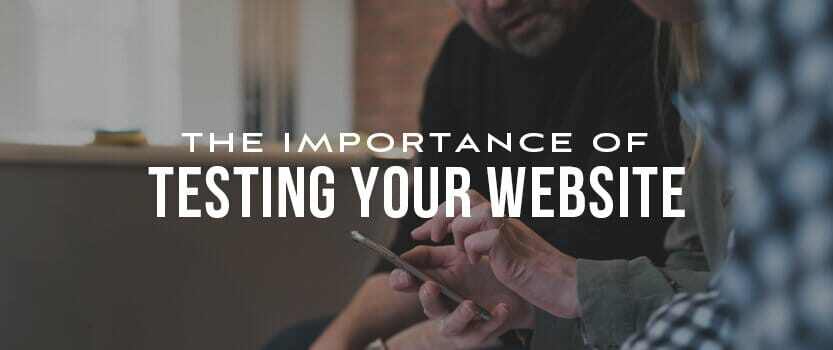4 min read
When Does Your Company Need A New Website?
The Warning Signs of an Outdated Website How can you tell when your company website isn’t cutting it anymore? It might not be as obvious...
Improve customer satisfaction and increase operational efficiency with a client portal.
Take control of your operations with customized software solutions.
Help your in-house dev team get more done, faster with our Midwest-based experts.
So you built a brand new website, which took a lot of time, money, and/or resources. As soon as you launch it, you get a text from a someone saying you have a huge spelling error on the homepage. You check it out. In the process, you realize that your images look grainy and it’s really hard to read on your phone screen. This all could be avoided when you test your website.
Website testing can be described as troubleshooting. When you’re developing a website, you need to find the issues that could be somewhere in your website before it goes live to the public. By testing, issues like basic functionality of the website, accessibility to users, and the site’s ability to adapt to different devices (like smart phones, tablets, and desktop devices) can be addressed and fixed before your website is launched. We do this for every website we create before we launch it.
When you’re ready to test your website, make sure to view each page that you want to be accessible. When you open each page, there are a number of things you should look for, including the layout of the page, how elements function, and how it looks on different devices. Read on to learn about what you should test.
Just because your website looks great in Google Chrome on your desktop doesn’t mean it’ll look the same on a mobile device—or even a different browser. Test each link in Chrome, Firefox, Internet Explorer, and on mobile and tablet devices. How do your pages render when you open them? If some images are off center on mobile but look fine on all desktop browsers, that’s a red flag that something needs to be fixed. Take the time to fix these issues; your mobile visitors won’t tolerate a bad experience.
Another way to say this is layout and design. This can be difficult to nail down if you’re not familiar with everything that goes into creating a nice-looking website. Here’s what you should look for when assessing look and flow:
Basically, make sure everything looks and feels correct. Everything should line up and make sense to your users. Don’t let a rouge line of indented text slide because “it’s not that bad” because it matters to your visitors.
Don’t assume that everyone will read you written content. In fact, most people don’t. However, if someone is reading your content on your website that you’ve spent a lot of time writing, that means they’re engaged with your brand. That’s why it’s vital to make sure your text is free of spelling and grammatical errors. It might help to have someone else review your content and act as a second set of eyes since it’s easy to overlook mistakes in content you’ve been working with for a while.
Nothing is more infuriating than visiting a website, clicking on a social media icon, and being taken to a completely irrelevant page, a 404 error page, or no page at all. It’s also frustrating if you click on an external link (a link that takes you to a different website or app) and it opens in the same tab your website was in. Now you have to hit the back button to return to the website you were just on. Bad links are some of the biggest ways you can lose an engaged potential customer or client. Here’s how you can ensure that your links are working:
Forms are anything that can be filled out by someone on your website. This includes message forms, contact forms, and applications.
Fill it out each contact form to make sure they work. First, try submitting it without any information (this shouldn’t work). Then, slowly fill it out until you’re confident that you’ll get the information you want when someone submits it in the real world. Testing forms is important because sometimes forms can be submitted without key lead information, like an email or phone number. After you click submit, verify that the correct thank you page or message appears. Then check the email associated with that form to make sure your request was actually submitted.
If you have issues in any of these areas, it’s a sign you need to make some changes if you want your website to be successful. When you identify any issues before the site goes live, it saves you time in the long run – plus it won’t leave your visitors with a bad impression of your company.
Are you considering a website redesign? We have compiled our top 21 tips for a successful website redesign. They are easy to understand and include videos, links, lists, and examples to guide you.

4 min read
The Warning Signs of an Outdated Website How can you tell when your company website isn’t cutting it anymore? It might not be as obvious...

2 min read
In today’s technological world, your construction company needs a sharp website. It’s where potential clients will first interact with your...

3 min read
Your online presence matters more than you might think. A whopping 94% of B2B buyers conduct some online research before purchasing – and 83%...
